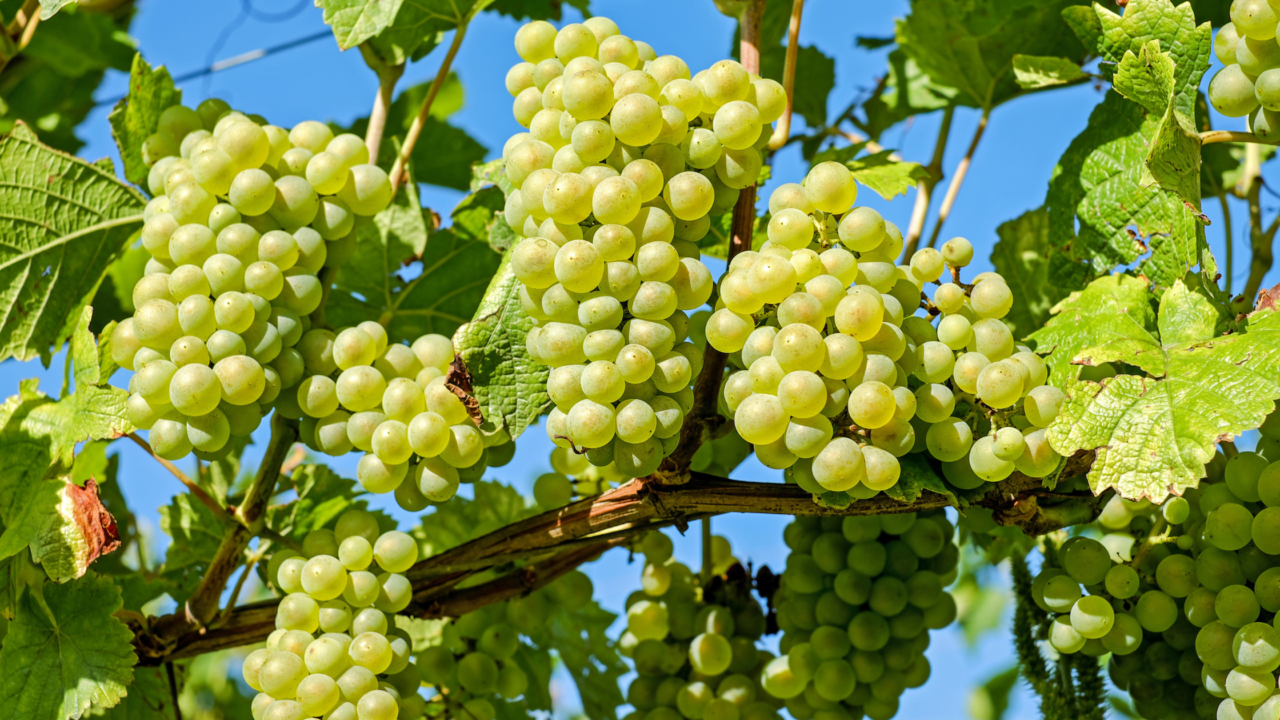When I say ‘champagne’, I mean champagne, so please don’t offer me a Prosecco instead. Yes, they both have bubbles, but that is where the similarity ends. They both have their place, but they are made with different grape varieties and method – the latter being less complex and often a little fruitier on the palate.
There is a strong history of Italian immigrants moving to Australia and bringing their food and wine traditions with them, and for that the Australian food and wine industry has so much to be thankful for. That includes establishing many grape varietals to produce wines, among them the Prosecco grape.
A quick summary of the great (or should I say grape?!) Prosecco debate. In Australia, we name our wines after the grape or blend of the wine – a Chardonnay, Shiraz, ‘Cab Merlot’, ‘Sem Sauv’ – and this includes Prosecco.
Prosecco has fast found popularity in Australia. The grape variety is originally from north-east Italy, and like the Italian lifestyle of taking time to enjoy life and a party, a Prosecco is crisp and lively with bright flavours. It’s fresh and fruity on the palate – think green apple, melon and pear. That freshness comes from the fruit and the Charmat or tank method used to produce (most of) them. The tank method takes days to weeks in the second fermentation and is done in a large tank. With the tank method, there’s less complexity on the palate and greater influence from what’s known as ‘primary flavours’ provided by the grape variety. The quickest method, also commonly used to make Prosecco in Australia is carbonation. Sometimes referred to as the ‘soda stream method’ this is done by adding carbon dioxide to a base wine. Aside from adding bubbles, this method doesn’t add any other influence to the wine.
The quicker carbonation or tank methods also mean a friendlier price tag, compared to a ‘methode traditionelle’ (traditional method), which is the method used for champagne as well as ‘traditional method’ sparklings from other places around the world. This second fermentation method to produce sparkling wine is done in bottle and takes months or years to produce.
The popularity of Australian Prosecco has caught the attention of the Italian wine industry. The Italians have possibly been making it since the ancient Roman Empire, while Australian producers have taken it to a world-class wine in just over 25 years of production.
When it comes time to negotiate our new trade agreements with the European Union (EU), there are always items on agenda or wish list from both sides. In recent years, the name Prosecco has been on the table as one that the Italians would prefer we no longer use on Australian versions of this bubbly wine.
You may think it is the same as the reasons that we cannot use the name ‘Champagne’ on our traditional method sparklings. On the surface yes, ‘same, same but different’, but there is a big difference. In France, rather than naming the wine after the grape variety, wines are named after their regions – a Côtes du Rhône, Burgundy, and of course Champagne. Italian wines usually include the grape variety as well as the region.
With Prosecco, this was the name of the grape variety. For our Italian families who migrated to Australia and brought with them Italian grape varieties to grow and make wine, naming the wine Prosecco was the same as naming their other wines Pinot Grigio, Nebbiolo, or Sangiovese.
In 2009, in an effort to establish Prosecco as a region or geographic indication (GI) rather than varietal, Italy changed the grape name from Prosecco to ‘Glera’, and Prosecco was declared an official GI in its native region. In Italy, similar to an Appellation d’Origine Contrôlée (AOC) in France, they have their own set of rules, as well as regional and quality classifications. A Denominazione di Origine Controllata (DOC) on a label represents the base level of Prosecco, made in parts of Italy’s Veneto and Friuli-Venezia Giulia regions, while Denominazione di Origine Controllata e Garantita (DOCG) is deemed to be of higher quality, covering the province of Treviso (with the two most famous denominations being Conegliano Valdobbiadene and Asolo).
In making these changes, Italy wanted the name Prosecco to be used solely for sparkling wine made from the ‘Glera’ grape in Italy’s Prosecco region. As Prosecco was planted in Australia as a grape variety before the GI became official, and it was already known and sold as Prosecco, we’ve continued to keep using the name.
Today, Australia’s Prosecco market is valued at around $200 million, up from around $60 million in 2017. The vast majority (95 percent) of those bubbles are sold locally.
Australia has embraced this easy drinking bubbles and, in my experience, the Australian palate shows a preference for this bubbly that is light on the palate. When I host Sparkling Masterclasses, and at our signature event The Bubbles Festivals, I find a lot of people prefer the Charmat method, including Prosecco. It’s easy drinking on the palate and a cheaper price when compared to the traditional method sparklings. Adding to its popularity is the trend of enjoying an Italian-style spritz as a cocktail, of which Prosecco is a main ingredient and so its reputation as a ‘celebratory staple’ continues to grow.
More than half of the country’s Prosecco comes from the King Valley region in north-east Victoria. The first Prosecco vines were planted there in 1999, and you will recognise names such as Dal Zotto (the first to launch an Australian Prosecco), followed by other big local names like Pizzini and Brown Brothers to name a few.
According to Wine Australia, Prosecco is now found in 11 Australian regions, and it’s been the fastest-growing variety over the past 10 years. While Prosecco thrives in cool climates like the King Valley, popular styles are also now rolling out of other regions, such as the Hunter Valley and Riverina in New South Wales, and Murray Darling in Victoria, it continues to find new homes and expressions.
Protections for the names of certain foods and drinks – so-called GIs – are a key part of the negotiations for the Australia and EU free trade agreement, and in recent years the EU has been pushing for the name Prosecco to be added to the list of protected names.
There is an existing wine agreement in place that came into effect in 2010. It was under this agreement that Australian winemakers lost the right to call their sparkling wine ‘Champagne’ or use the term ‘methode champenoise’ for the method. But as Prosecco exists in Australia under a different set of circumstances, in the last round of trade talks winemakers converged on Canberra to champion Prosecco’s case with politicians. Arguments included that setting a precedent by taking away the use of the names of the grape variety called Prosecco, which grape variety might be next? In a country where all wine grapes have at one point been imported from elsewhere, it would be catastrophic to the Australian wine industry.
The trade agreements include negotiations involving such things as market access for key Australian agricultural products such as beef, lamb, dairy, sugar, rice, and grains. The EU also wants greater access to our markets, including our minerals, and the removal of things like the luxury car tax for European cars. With all of this up for negotiation, it is important for our politicians to understand the significance of this for the Australian wine industry.
Delegations from the wine industry met with politicians and thousands of signatures were added to petitions. In the last round, no deal was done, with Australian government ministers walking away from the deal in November last year stating that there were not enough significant benefits for Australia to outweigh the requested restrictions.
Negotiations continue, but for now Australian Prosecco stays.
Salute!
Other blogs you might find interesting:
Why that is not a glass of Champagne that you are drinking!
Why is champagne so expensive?
If you’re interested to learn more about champagne and sparkling wine blends and methods. Check out our Bubbly Appreciation Courses as well as The Bubbles Reviewers Club
Like to keep following us, get first look at events, receive bubbly information and be in our giveaway draws and have a chance to win a bubbly prize? You can join our list, it’s FREE to join here.

Natalie Pickett is the Founder of The Bubbles Review which is for people who like champagne and other bubbles, written by people who have a love of all things sparkling! At The Bubbles Review, we like to debunk some myths, make the art of drinking champagne accessible, explore bubbly regions and champagne bars, and provide events for you to join us and indulge.
